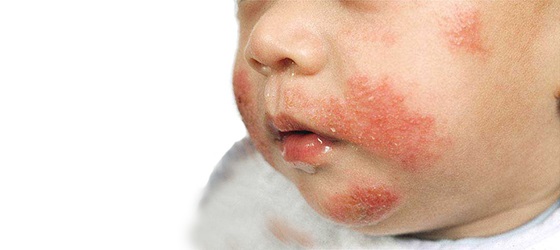Leprosy

Leprosy, which is also known as Hansen's disease, is a long-lasting infection caused by bacteria. It is a slowly developing, progressive disease that damages the skin and nervous system. The disease develops slowly and results in skin lesions and deformities, most often affecting the cooler places on the body (for example, eyes, nose, earlobes, hands, feet, and testicles). The disease can spread from person to person when someone with the disease coughs or sneezes.
Symptoms
It may take 2-10 years before signs and symptoms appear.
- Skin lesions that may be faded/discolored
- Growths on the skin
- Thick, stiff or dry skin
- Severe pain
- Numbness on affected areas of the skin
- Muscle weakness or paralysis (especially in the hands and feet)
- Eye problems that may lead to blindness
- Enlarged nerves (especially those around the elbow and knee)
- A stuffy nose
- Nosebleeds
- Ulcers on the soles of feet
 Causes
Causes
Leprosy is caused by a slow-growing type of bacteria called Mycobacterium leprae (M. leprae). Leprosy is not that contagious. You can catch it only if you come into close and repeated contact with nose and mouth droplets from someone with untreated leprosy. Children are more likely to get leprosy than adults.
Diagnosis
 Skin biopsy is conducted for the one with a suspicious skin sore by removing a small sample of the abnormal skin. If you have a suspicious skin sore, your doctor will remove a small sample of the abnormal skin.
Skin biopsy is conducted for the one with a suspicious skin sore by removing a small sample of the abnormal skin. If you have a suspicious skin sore, your doctor will remove a small sample of the abnormal skin.
Treatment
Treatment for leprosy requires multiple medicines. If left untreated, this disease can cause extensive and permanent damage to the skin, limbs and eyes.
Prevention
The most effective way of preventing disabilities in leprosy and preventing further transmission of the disease, lies in early identification (diagnosis) and treatment with proper medicines (multidrug therapy).
Copyright©2015 Amrita CREATE All Rights Reserved

 Learn
Learn
 Practice
Practice
 Offline
Offline


 Tools
Tools


